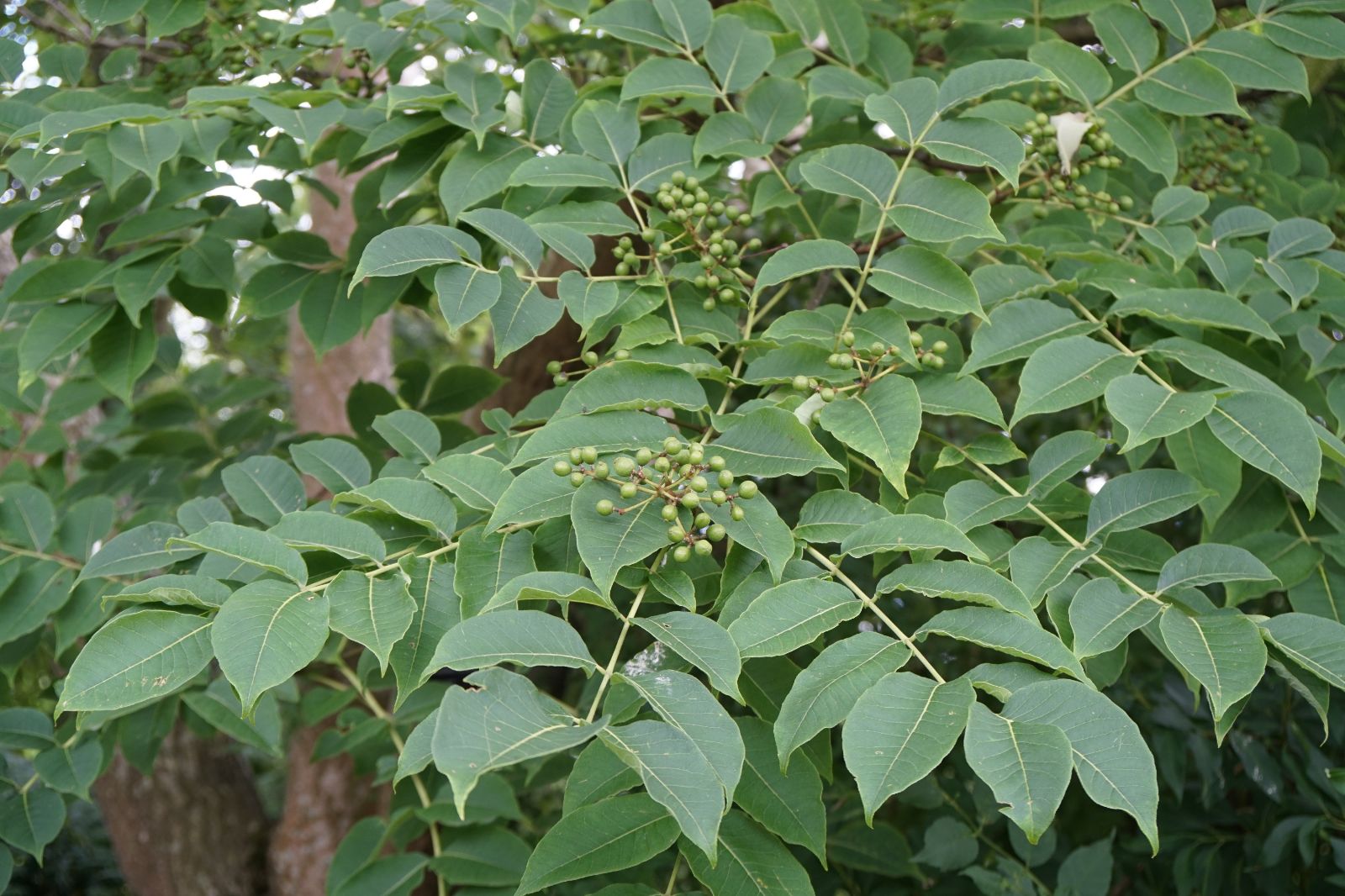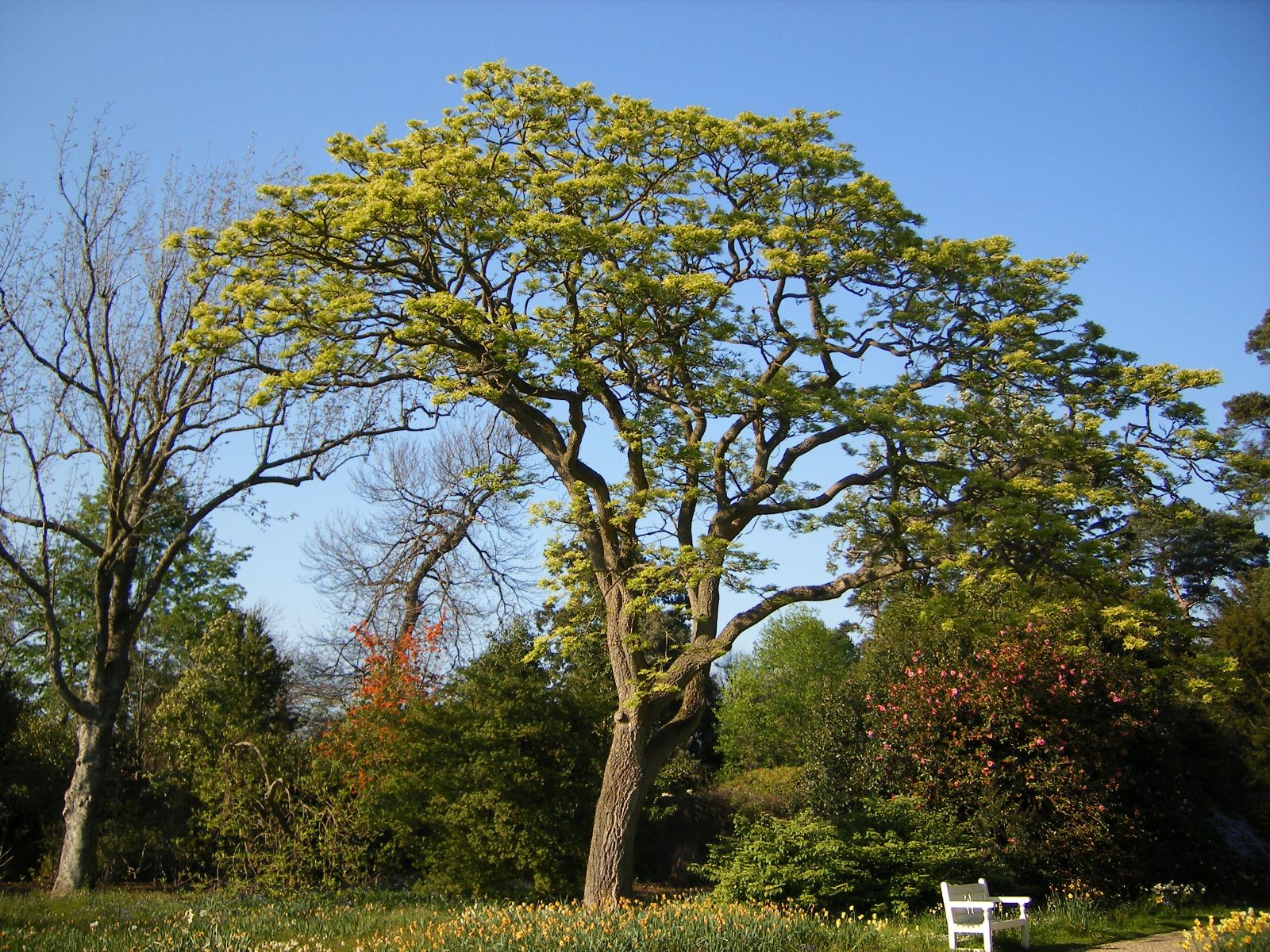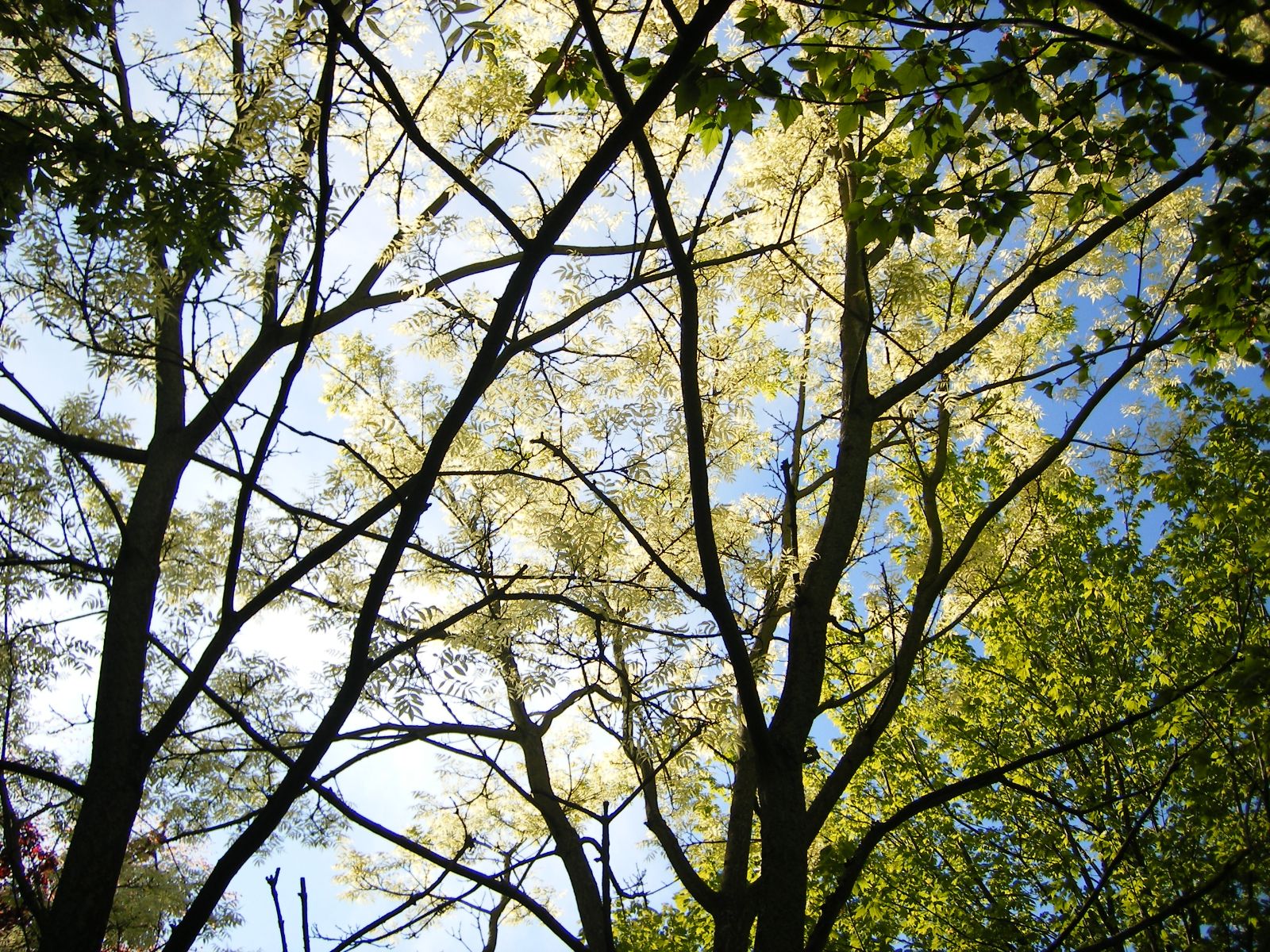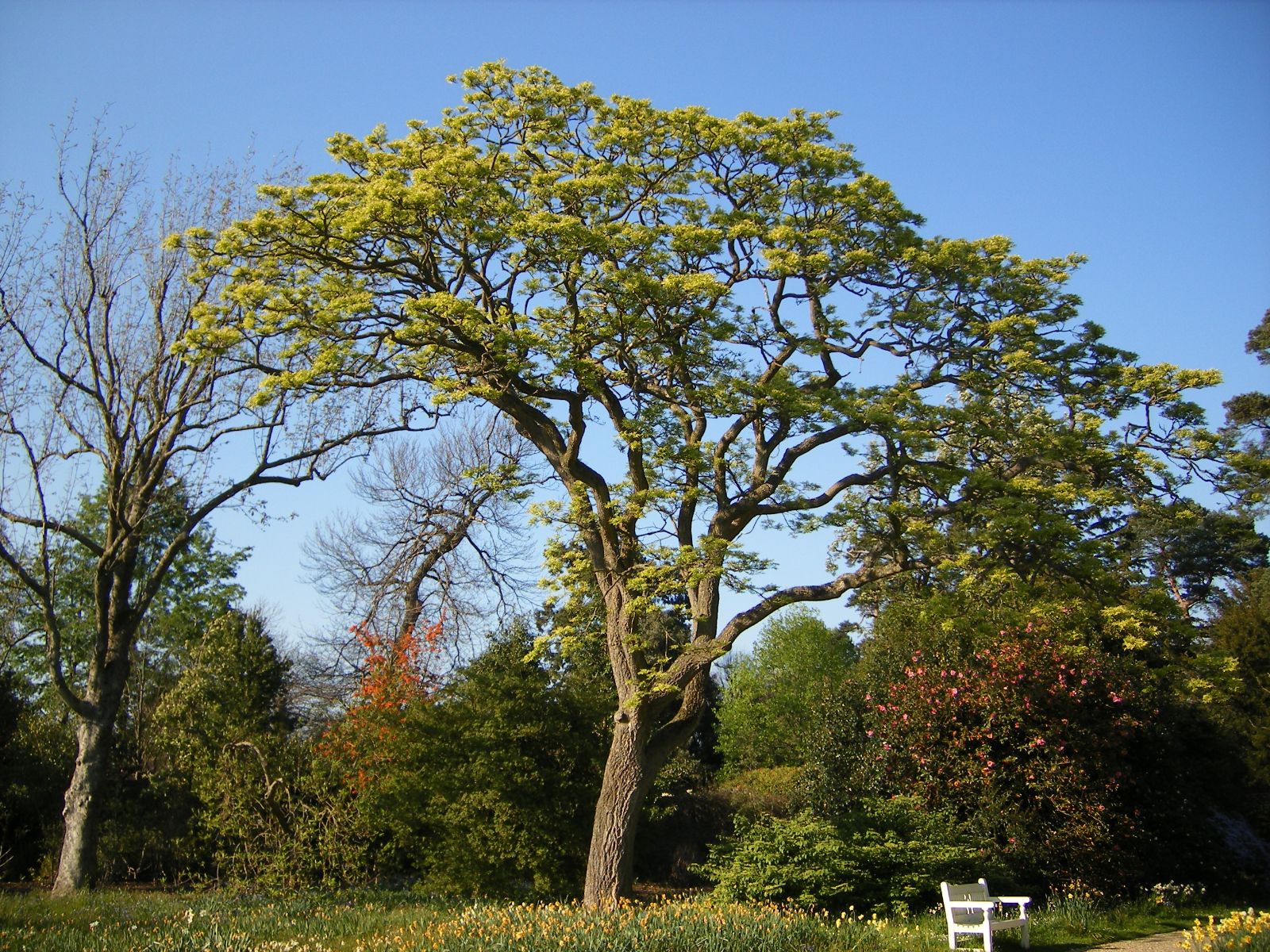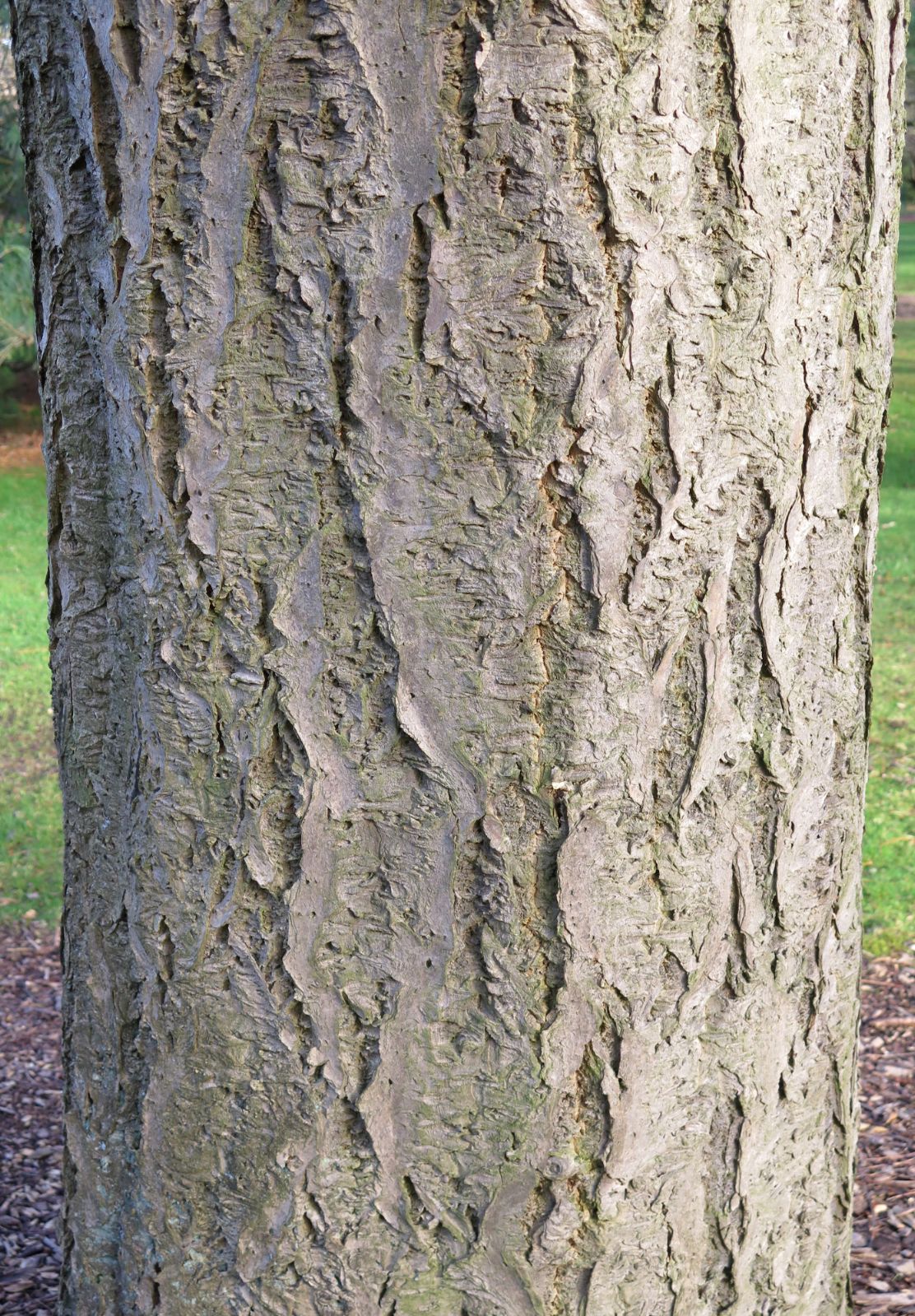Phellodendron amurense
Credits
Article from Bean's Trees and Shrubs Hardy in the British Isles
Recommended citation
'Phellodendron amurense' from the website Trees and Shrubs Online (treesandshrubsonline.
Genus
Infraspecifics
Other taxa in genus
A deciduous tree 20 to 40 ft high, with a rugged, corky trunk and spreading branches; winter-buds coated with silvery hairs; young shoots glabrous. Leaves pinnate, 10 to 15 in. long, with five to eleven leaflets which are 21⁄2 to 41⁄2 in. long, ovate or ovate-lanceolate, long-pointed, hairy only on the margin and at the base of the midrib, glossy green above. Panicles erect, 3 in. high, 11⁄2 to 3 in. wide; few-branched. Flowers small, yellow-green, 1⁄4 in. long. Fruits about 1⁄2 in. in diameter, black.
Native of the Amur region, Manchuria, etc. Although the most handsome of the phellodendrons where the climate is suitable, it is a failure here. Like so many other trees from the mainland of N.E. Asia, it is very liable to have its young shoots injured by late frosts. This induces excessive branching and an unnaturally dwarfed, bushy habit. It thrives well in the Arnold Arboretum, Massachusetts, which has a more decided winter than ours, and a later spring. There it has developed the corky trunk to which the genus owes its name. However, it is now considered that typical P. amurense also occurs in Japan, and it might be that trees of this provenance would succeed in Britain.
From the Supplement (Vol. V)
The following belong either to P. amurense sens. strict. or to var. lavallei, the difference between which is not clear-cut: Kew, pl. 1899, this tree is dead (1986); Wakehurst Place, Sussex, 52 × 53⁄4 ft (1984); Borde Hill, Sussex, 56 × 5 ft (1984); Nymans, Sussex, Magnolia Garden, 46 × 8 ft (1983); Beauport, Battle, Sussex, 59 × 41⁄4 ft (1983); Aldenham Park, Herts., 52 × 31⁄2 ft (1976).
The specimen of the var. sacchalinensis at Kew by the Victoria Gate, pl. 1904, measures 40 × 51⁄2 ft (1979), and there is another at Tortworth Court, Gloucestershire, of 52 × 71⁄4 ft (1973).
var. lavallei (Dode) Sprague
Synonyms
P. lavallei Dode
P. amurense Hort., in part, not Rupr.
P. japonicum Hort., in part, not Maxim
Bark corky, though less so than in typical P. amurense. Leaflets oval-lanceolate, seven to eleven, with long slender points, obliquely rounded at the base, or sometimes abruptly narrowed to an acute wedge, dullish green above, midrib and chief veins beneath furnished with white hairs, margins ciliate. Panicles downy. Bot. Mag., t. 8945.Native of Japan; introduced to cultivation in 1865 or 1866 by means of seeds collected by Tschonoski and distributed from St Petersburg by Regel; reintroduced by Wilson in 1918. It was at first grown as P. amurense or P. japonicum, and was separated as a species in 1909 by Dode, who drew up his description from a tree grown by Lavallée in the Segrez Arboretum (see further in Dr Stapf’s note accompanying the plate in the Botanical Magazine). P. japonicum differs from this variety in the soft down which covers the whole of its much more rounded leaflets beneath; typical P. amurense has only a little down near the base of the midrib and the upper surface is dark, glossy green.P. amurense var. lavallei succeeds very well under cultivation and grows vigorously at Kew, where there is a specimen planted in 1899, measuring 40 × 3{1/2} ft (1967). This tree fruits and produces fertile seeds, although the nearest male phellodendron is at a considerable distance. This is also true of a tree at Borde Hill in Sussex, younger than the Kew tree, which measures 35 × 3{1/2} ft at 4 ft (1968); it fruits abundantly, although the nearest possible pollinator is a small tree more than 100 yards away. The leaves turn bright yellow before falling.
var. sachalinense F. Schmidt
Synonyms
P. sachalinense (F. Schmidt) Sarg

